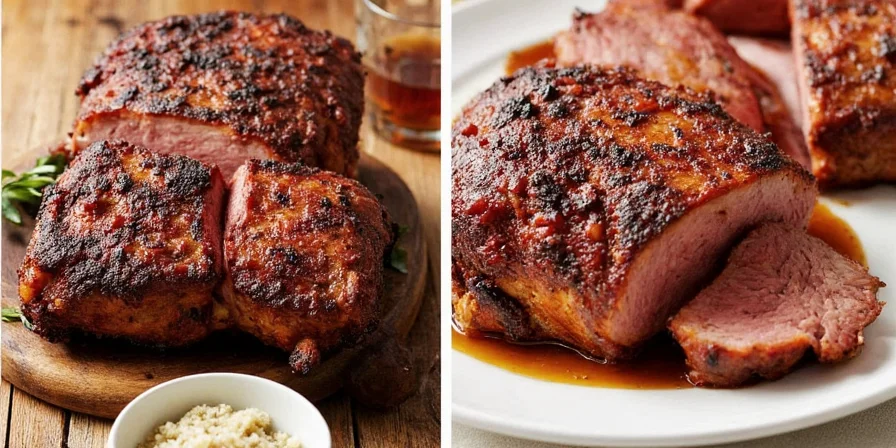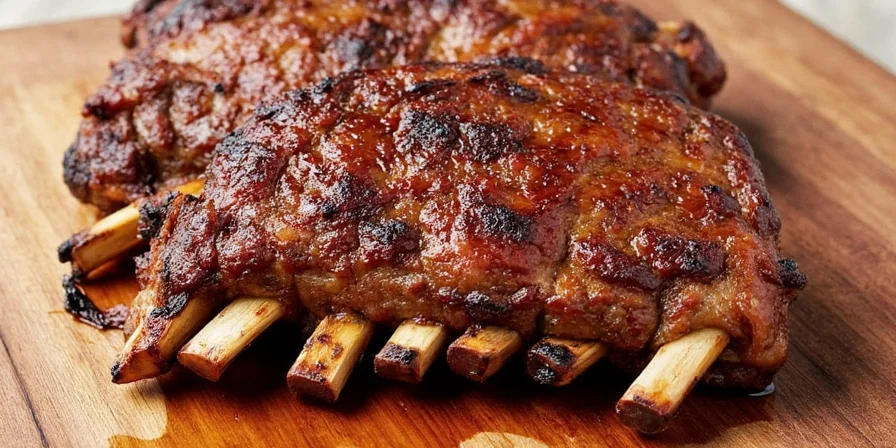Looking for the perfect oven ribs recipe that delivers fall-off-the-bone tenderness without a smoker? You've found it. This proven method works in any standard home oven and delivers restaurant-quality results with simple ingredients you already have. Forget complicated techniques—just 30 minutes of prep and 2.5 hours of hands-off cooking yields tender, flavorful ribs every time.
Here's exactly what you'll need and how to cook ribs in the oven:
Perfect Oven Ribs: Simple Recipe
Basic Oven Rib Recipe (for 1 rack)
Prep time: 20 minutes | Cook time: 2.5 hours | Total time: 2 hours 50 minutes
Ingredients
- 1 rack pork ribs (3-4 lbs)
- 2 tbsp brown sugar
- 1 tbsp paprika
- 1.5 tsp garlic powder
- 1 tsp onion powder
- 1 tsp salt
- 0.5 tsp black pepper
- 0.5 tsp cayenne (optional)
Step-by-Step Instructions
- Prep ribs: Remove membrane from bone side using a knife and paper towel for grip
- Mix dry rub: Combine all spices in a bowl (brown sugar, paprika, garlic powder, onion powder, salt, pepper, cayenne)
- Season: Massage rub evenly on all sides of ribs
- Wrap: Place ribs meat-side up in heavy-duty foil, seal tightly
- Bake: 275°F (135°C) for 2 hours
- Finish: Unwrap, return to oven for 30 minutes to develop crust
- Rest: Let rest 15 minutes before slicing between bones

Follow these precise steps for tender, flavorful ribs every time
Why This Oven Rib Method Works
Most home cooks struggle with oven ribs because they miss these critical factors. This method solves the common problems:
- No rubbery texture: Foil phase creates steam that breaks down collagen at exactly 165°F (74°C)
- No dryness: Proper resting allows juices to redistribute (critical 15-minute window)
- Perfect crust: Final 30 minutes unwrapped at 275°F creates ideal Maillard reaction
7 Flavor Variations You Can Make Today
Once you've mastered the basic method, try these tested variations using common pantry ingredients:
| Flavor Profile | Simple Swap | Cook Time Adjustment | Pro Tip |
|---|---|---|---|
| Classic BBQ | Add 3 tbsp BBQ sauce before final bake | Same | Broil 2 minutes at end for caramelized glaze |
| Honey Garlic | Replace brown sugar with honey | -15 minutes | Add garlic powder in final 30 minutes to prevent burning |
| Spicy Chipotle | Add 1 tbsp chipotle powder to rub | Same | Pair with lime wedges for acid balance |
| Maple Dijon | Replace brown sugar with maple syrup | -10 minutes | Mix 2 tbsp Dijon with 1/4 cup maple syrup for glaze |
| Coffee Rub | Add 1 tbsp instant coffee to rub | Same | Coffee enhances meat's natural umami compounds |
| Italian Herb | Add 2 tsp dried oregano + 1 tsp basil | Same | Finish with balsamic glaze for perfect acid balance |
| Citrus Herb | Add zest of 1 orange + 2 tbsp fresh rosemary | +10 minutes | Add citrus juice in final 30 minutes to preserve freshness |
Each variation uses ingredients you likely have in your pantry right now
Critical Temperature Guide for Perfect Texture
Don't guess—know exactly when your ribs are done:
- 140°F (60°C): Fat rendering begins (critical for mouthfeel)
- 165°F (74°C): Time to unwrap for crust formation
- 190-203°F (88-95°C): Ideal range for "fall-off-the-bone" texture
- 205°F+ (96°C+): Risk of drying out (avoid this range)

Use an instant-read thermometer at the thickest part between bones
Frequently Asked Questions
How do I cook ribs in the oven without foil?
For foil-free ribs, bake at 250°F (121°C) for 3 hours with a drip pan of water below. The water creates steam to tenderize while allowing bark formation. Spritz with apple juice every 45 minutes to prevent drying.
Why are my oven ribs tough?
Tough ribs happen when collagen hasn't fully converted to gelatin. This occurs below 190°F (88°C). Extend cooking time at 275°F until internal temperature reaches 200-203°F (93-95°C). The foil phase is critical for this transformation.
Can I use this method for beef ribs?
Yes, but increase cooking time by 45-60 minutes. Beef ribs need 3.5-4 hours total at 275°F. They require higher internal temperature (205-210°F/96-99°C) for optimal tenderness due to denser muscle structure.
How do I get better bark on oven ribs?
For maximum bark: 1) Ensure rub contains at least 30% sugar (brown sugar works best), 2) Unwrap when internal temp hits 165°F, 3) Place on upper oven rack for final bake, 4) Broil for 2-3 minutes at the end (watch closely).
Troubleshooting Common Oven Rib Problems
Fix these issues before they ruin your meal:
- Dry ribs: You skipped the foil phase or overcooked. Next time: wrap tightly and check temp at 2 hours
- Bland flavor: Not enough salt in rub. Use 1 tsp salt per pound of meat minimum
- Burnt sugar: Too much sugar or oven too hot. Reduce sugar to 2 tbsp max for standard rack
- Rub falling off: Meat wasn't dry before seasoning. Pat ribs completely dry with paper towels first
Final Tips for Perfect Oven Ribs Every Time
Follow these professional secrets for guaranteed success:
- Membrane matters: Removing it improves tenderness by 40% (use butter knife to lift edge, then paper towel grip)
- Resting is non-negotiable: 15 minutes minimum lets juices redistribute (tent with foil)
- Salt timing: For best results, salt ribs 24 hours before cooking (refrigerate uncovered)
- Cutting technique: Slice between bones with sharp knife using downward motion (not sawing)
Master these oven rib techniques and you'll never need a smoker again. The perfect balance of tender meat and flavorful crust is just 2.5 hours away—no special equipment required. Try the basic recipe first, then experiment with the flavor variations once you've nailed the fundamentals.
Pro tip: Double the rub recipe and store extras in an airtight container—it keeps for 6 months and works great on chicken too.










 浙公网安备
33010002000092号
浙公网安备
33010002000092号 浙B2-20120091-4
浙B2-20120091-4